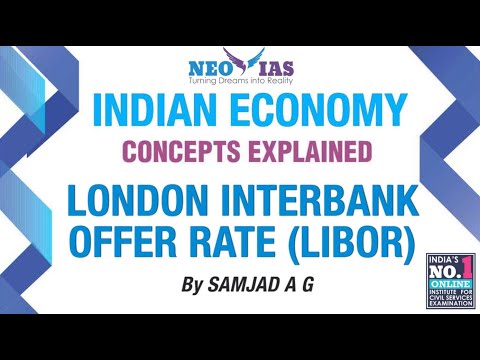
Despite that, sometimes it may appear confusing to beginners in Stock Market. Scrip is a type of alternative or substitute currency that can only be redeemed scrip meaning in share market at a certain company. Rewards points, gift cards, and coupons are all familiar examples of scrip that can be used in place of legal tender.
Growth corporations often choose to give a stock dividend because they are in a growth stage and want to use this cash to further growth. When a corporation doesn’t give any dividend or decreases the dividend given, it sends a bad message about the current condition and future prospects of the corporation. Increasing the number of shares has the effect of reducing the stock price, making the stock more affordable for retail investors.

Employees could then redeem them at the company store for the goods they needed. However, at the company store, most employers overcharged employees for goods, and the scrip was usually exchanged at a lower value. This left employees with no choice but to keep working for the company. However, there are currently other forms of scrips used across the world. This is actually a double advantage as it also encourages customers to repeatedly conduct business with the company. Even if the customer is not satisfied with their purchase, they offer store credit which in turn causes them to return.
Stock Dividend: What It Is and How It Works, With Example
For example, if a company decides that shareholders will receive one scrip dividend for every ten shares, a person who owns 20 shares will get two scrip dividend shares. Company X declares a 10% stock dividend on its 500,000 shares of common stock. Its common stock has a par value of $1 per share and a market price of $5 per share.
NSE, BSE To Introduce Enhanced Surveillance Mechanism For “Micro-Small” Companies From Jun 5 – Outlook India
NSE, BSE To Introduce Enhanced Surveillance Mechanism For “Micro-Small” Companies From Jun 5.
Posted: Mon, 05 Jun 2023 07:00:00 GMT [source]
That gives existing investors one additional share of company stock for every 20 shares they currently own. So, say that the company’s shares had a market value of $2.50 and one investor owned 20 shares before the stock dividend. A scrip in the stock market describes a document given to stockholders showing that they should receive a certain number of stocks. Scrips are used as alternatives to cash dividends in the stock market. Scrip dividends are paid based on the number of shares that a shareholder holds.
What Is the Difference Between a Stock Dividend and a Cash Dividend?
Scrips have also been extensively applied in localised commerce when the conventional currency was not available or short in supply. All content on this website, including dictionary, thesaurus, literature, geography, and other reference data is for informational purposes only.

In the stock market, scrip represents a temporary document that represents fractional shares resulting from a split or spin-off. Trading volume is the quantity that is being traded at any point in time during trading hours. The trading volume affects the volatility of the price of a stock and thus also impacts the share’s LTP.
TaxCloud (Direct Tax Software)
But it can also result in a reduction in dividend per share in the future, a factor which doesn’t go down too well with shareholders. A company’s share price proportionally adjusts to the number of bonus shares issued. Like any stock shares, stock dividends are not taxed until the investor sells the shares.
Scrip Asks…What Does 2023 Hold For Biopharma? Part 5 … – Scrip
Scrip Asks…What Does 2023 Hold For Biopharma? Part 5 ….
Posted: Fri, 27 Jan 2023 08:00:00 GMT [source]
A stock dividend is a payment to shareholders that is made in additional shares instead of cash. The stock dividend rewards shareholders without reducing the company’s cash balance. Dividends refer to the share of profits that a company regularly gives investors. For example, if Ann owns 100 shares of a soft drink company, and the company pays $1 per share as a dividend at the end of the year, Ann would receive $100 at the end of every year. Now, coming to their application in the stock market – Companies sometimes find themselves short of cash to pay dividends to shareholders.
You must cCreate an account to continue watching
For example, Canadian retailer Canadian Tire issues its own form of currency—Canadian Tire—money that looks like real currency but isn’t. Customers receive a percentage of Canadian Tire money back when they make purchases. This “cash” can then be used toward purchases made at retail and gas station purchases. However, a company can also decide to pay shareholders using a scrip dividend program.
- Or, they can sell the additional shares immediately, pocket the cash, and still retain the same number of shares they had before.
- The LTP in the share market is one of those numbers that investors may consider before placing a trade order.
- The issuance of bonus shares is not taxable; however, shareholders must still pay capital gains tax if they sell them for a net gain.
- A shareholder with 100 shares in the company would receive five additional shares.
The investor would have $45 worth of shares—but when they receive one more share from the company, they would now own 21 shares with a value of $45. For example, in the past, after a corporate stock split or spin-off, a company might issue scrip representing a fractional share of stock for each share you owned. On or before a specific date, you could combine the certificates and convert the value they represented into full shares. Scrips have historically been used as an alternative currency when traditional currency is not readily available. The origin of scrips can be traced back to the industrial revolution. During this time, the truck system provided that employees could be paid using tokens, vouchers, or other forms rather than cash.
What’s a Stock Dividend?
Additionally, the corporation’s stockholders equity doesn’t change in amount but changes in composition. The fair market value of the small stock dividend is taken out of retained earnings and transferred into common stock and additional paid-in capital. Companies issue bonus shares to make their stock more attractive for retail investors, provide an alternative to a cash dividend, and/or reflect a position of financial health. In a nutshell, a company issues bonus shares to boost investment and reward shareholders. In corporate finance, a scrip issue, also known as capitalisation issue or bonus issue, is the process of creating new shares which are given free of charge to existing shareholders.
The company issuing the scrip shares has now expanded the number of shares in existence, but not increased the value of the company. This means that the relative value of each pre-existing share has been reduced slightly. Therefore, although scrip dividends have many benefits, they can also upset shareholders. On the other hand, LTP is the price at which the last trade happened for the stock. The intrinsic value and the LTP are not equal since the market’s demand, and supply parameters largely drive the share price up or down.
However, if given an option of cash or stock like a scrip dividend, then shareholders must pay tax. A scrip dividend refers to a certificate that a company gives to shareholders instead of giving them cash dividends. Stockholders can choose to receive a scrip dividend as cash or as extra shares. Since shareholders who choose scrip dividends get extra shares of the same company, the program can be considered an automatic reinvestment.
The stock dividend has the advantage of rewarding shareholders without reducing the company’s cash balance—but it does increase its liabilities. For example, if a company issues a stock dividend of 5%, it will pay 0.05 shares for every share owned by a shareholder. A scrip issue, or bonus issue, is when a company creates new shares and awards them to existing stockholders. This is different from a scrip dividend, where stockholders are given the choice of receiving cash or shares. When a company offers its shareholders a scrip dividend, it offers them the choice to receive dividends in the form of more shares or in cash.
- Indian Stock market has two leading stock exchanges – BSE (Bombay Stock Exchange) and NSE (National Stock Exchange).
- For example, if a company’s stock price was at $10 and it had a 1-for-1 bonus issue, the stock price would readjust to $5 to reflect the additional bonus shares.
- A scrip election gives shareholders the right to choose, or “elect,” to receive a scrip dividend instead of a cash dividend.
- Therefore, the company pays its shareholders extra shares and avoids distributing cash dividends.
- Increasing the number of shares has the effect of reducing the stock price, making the stock more affordable for retail investors.
A higher trading volume implies there are many buyers and sellers for a particular stock. On the other hand, a lower trading volume implies lower orders being placed. Higher volume and higher volatility imply higher interest among the buyers and sellers in that stock. As a result, with higher market volatility, the LTP of that stock fluctuated more quickly. A scrip election gives shareholders the right to choose, or “elect,” to receive a scrip dividend instead of a cash dividend. The primary advantage of using scrip is that the issuing company can limit its cash outflows while encouraging repeat business.
